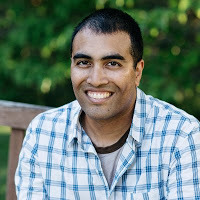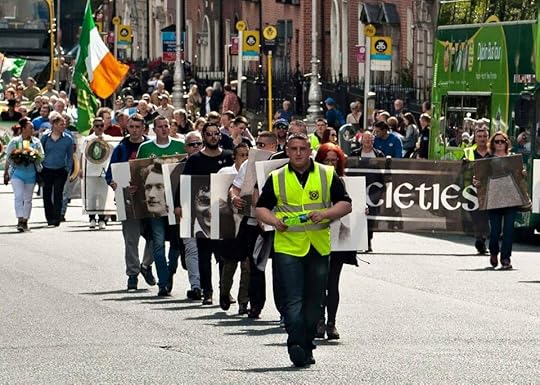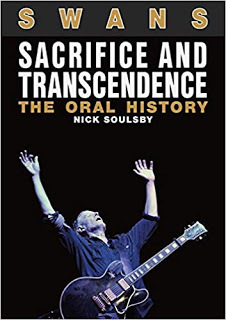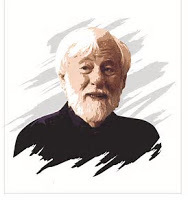Anthony McIntyre's Blog, page 1124
August 5, 2018
Kevin Swanson - God Set California on Fire for Legitimizing Homosexuality
Hemant Mehta writing in Friendly Atheist exposes more religious idiocy in the US.
The answer is climate change gay people. At least according to preacher Kevin Swanson, who said on his “Generations” radio program yesterday that God was punishing the state for allowing marriage equality.
“In 2005,” Swanson continued:
Somehow, for reasons no one will Ever understand, wildfires haven’t struck Massachusetts yet even though same-sex marriage was legal there before anywhere else in the nation…
And if God is sending a fire to California out of anger, then can someone please explain why a dam is on the verge of bursting in Lynchburg, Virginia, home to Jerry Falwell, Jr.‘s Liberty University?
Either Liberty is secretly home to a ton of gay students… or Swanson is talking out of his ass.
It’s not even his first time saying this. Back in January, when California was dealing with a different fire, Swanson claimed it was because the state had turned “pedophiliacs and homosexuals into heroes.”
Also, when Texas was hit by Hurricane Harvey, Swanson blamed Houston for having “a very, very aggressively pro-homosexual mayor”… even though that mayor had been out of office for a year and a half.
There’s no disaster that Swanson won’t blame on gay people. Because that’s what Jesus would do.
(via Right Wing Watch. Portions of this article were published earlier)
 Hemant Mehta blogs @ Friendly Atheist
Hemant Mehta blogs @ Friendly Atheist
Follow Hemant Mehta on Twitter @hemantmehta


The answer is climate change gay people. At least according to preacher Kevin Swanson, who said on his “Generations” radio program yesterday that God was punishing the state for allowing marriage equality.
“In 2005,” Swanson continued:
California state legislators became the first in the nation to pass a same-sex marriage law … In 2008, the California Supreme Court then struck down Prop 22 in regard to marriage cases, and Prop 8 also was struck down later on that year, I believe. In 2011, California became the first state to mandate homosexual indoctrination for K-8 students and then, in 2012, California became the first state to sign a ban on therapy that was attempting to convert homosexuals into non-homosexuals. And then, in 2017, the California state schools implemented the homosexual indoctrination program … and that was the kickoff for the biggest fires that California has ever seen in its history.
So God is burning down California in 2017 and 2018 after about 25 years of leading the pack to legitimize the sin of homosexuality in that state.
Somehow, for reasons no one will Ever understand, wildfires haven’t struck Massachusetts yet even though same-sex marriage was legal there before anywhere else in the nation…
And if God is sending a fire to California out of anger, then can someone please explain why a dam is on the verge of bursting in Lynchburg, Virginia, home to Jerry Falwell, Jr.‘s Liberty University?
Either Liberty is secretly home to a ton of gay students… or Swanson is talking out of his ass.
It’s not even his first time saying this. Back in January, when California was dealing with a different fire, Swanson claimed it was because the state had turned “pedophiliacs and homosexuals into heroes.”
Also, when Texas was hit by Hurricane Harvey, Swanson blamed Houston for having “a very, very aggressively pro-homosexual mayor”… even though that mayor had been out of office for a year and a half.
There’s no disaster that Swanson won’t blame on gay people. Because that’s what Jesus would do.
(via Right Wing Watch. Portions of this article were published earlier)
 Hemant Mehta blogs @ Friendly Atheist
Hemant Mehta blogs @ Friendly Atheist Follow Hemant Mehta on Twitter @hemantmehta


Published on August 05, 2018 01:00
A Morning Thought (96)
Published on August 05, 2018 00:30
August 4, 2018
Route To The Republic Lies In Struggle From Below
Attached is the text of a letter from Sean Bresnahan published in the Irish News, 4th July, noting that the proposed ‘agreed Ireland’ of constitutional nationalism is outside Irish Republicanism, demanding that Republicanism form a bulwark against such revisionism through the employ of struggle from below.

While a changed circumstance, born of Brexit and demographic change, suggests some form of United Ireland may well be in the offing, for Irish Republicans a key consideration lies in what kind of Ireland is intended toward. Here we might remember that Ireland has been united before, under British rule, and so that concept, of itself, is not a panacea.
Irish Republicanism sets toward a national democracy mounted on the 1916 Proclamation — a separate endeavour to the supposed United Ireland that can be formed out of the Good Friday Agreement. If the writ of the British in Ireland is to be ended, Republicans must take note. For there is no viable route to the Republic through the provisions of the Good Friday process.
That process is set, instead, toward John Hume’s ‘agreed new Ireland’ — a revisionist construct whose intent and design is to reconcile Ireland to Britain, ensuring thus, should a United Ireland emerge, the retention of British domain. Other avenues need considered if the Republican object is to be realised.
Our response to the challenge this presents, rather than to retreat into mere ‘rejectionism’, must be to build support for the 32-County Republic set out under the Proclamation. Engaging our people on its merit is the work now before us. Failing as much, the more limited design of constitutional nationalism will only be further emboldened.
No matter how outward appearances may present, this design, were it to proceed, would be a further set back. For the ‘agreed new Ireland’ of Varadkar and co intends not on the Irish Republic but on a continuum of the Good Friday Agreement, to be entered into as a revised compromise with the British state on an all-Ireland basis.
Irish Republicans must focus accordingly, to ensure things do not end up so. Building struggle from below at a grassroots level, engaging ordinary people on a positive basis through political campaigning and initiative, is the journey that now must begin. Any hope that remains for the Irish Republic depends on it.
 Sean Bresnahan, Chair, Thomas Ashe Society Omagh blogs at An Claidheamh Soluis
Sean Bresnahan, Chair, Thomas Ashe Society Omagh blogs at An Claidheamh Soluis
Follow Sean Bresnahan on Twitter @bres79



While a changed circumstance, born of Brexit and demographic change, suggests some form of United Ireland may well be in the offing, for Irish Republicans a key consideration lies in what kind of Ireland is intended toward. Here we might remember that Ireland has been united before, under British rule, and so that concept, of itself, is not a panacea.
Irish Republicanism sets toward a national democracy mounted on the 1916 Proclamation — a separate endeavour to the supposed United Ireland that can be formed out of the Good Friday Agreement. If the writ of the British in Ireland is to be ended, Republicans must take note. For there is no viable route to the Republic through the provisions of the Good Friday process.
That process is set, instead, toward John Hume’s ‘agreed new Ireland’ — a revisionist construct whose intent and design is to reconcile Ireland to Britain, ensuring thus, should a United Ireland emerge, the retention of British domain. Other avenues need considered if the Republican object is to be realised.
Our response to the challenge this presents, rather than to retreat into mere ‘rejectionism’, must be to build support for the 32-County Republic set out under the Proclamation. Engaging our people on its merit is the work now before us. Failing as much, the more limited design of constitutional nationalism will only be further emboldened.
No matter how outward appearances may present, this design, were it to proceed, would be a further set back. For the ‘agreed new Ireland’ of Varadkar and co intends not on the Irish Republic but on a continuum of the Good Friday Agreement, to be entered into as a revised compromise with the British state on an all-Ireland basis.
Irish Republicans must focus accordingly, to ensure things do not end up so. Building struggle from below at a grassroots level, engaging ordinary people on a positive basis through political campaigning and initiative, is the journey that now must begin. Any hope that remains for the Irish Republic depends on it.
 Sean Bresnahan, Chair, Thomas Ashe Society Omagh blogs at An Claidheamh Soluis
Sean Bresnahan, Chair, Thomas Ashe Society Omagh blogs at An Claidheamh Soluis
Follow Sean Bresnahan on Twitter @bres79


Published on August 04, 2018 09:30
Support Ukrainian Political Prisoners
From People And Nature a brief report from Gabriel Levy on a protest in solidarity with political prisoners in Ukraine which took place in London last week.
They highlighted the case of film director Oleg Sentov, who was yesterday on the 71st day of a hunger strike, and is seriously ill. Sentsov is demanding the release of the 70 Ukrainian prisoners.
 The demonstration in Parliament Square, London, yesterday
The demonstration in Parliament Square, London, yesterday
The prisoners include opponents of Russian military action in eastern Ukraine, some Crimean Tatar community activists. Many of them, including Sentsov himself, have been framed up on fictitious “terrorism” charges that have been condemned internationally as bogus.
For information on the prisoners’ cases, see these links.
■ “Sentsov considers his solo release would be a ‘total failure’”: article, with links to pages on other Ukrainian prisoners (from Kharkiv Human Rights Protection Group)
■ Report of a visit to Oleg Sentsov (from the Russian Reader)
■ An interview with Oleg Sentsov’s cousin, Natalya Kaplan, who visited him earlier this month (from the Russian Reader)
■ An outline of the case of Pavlo Hryb, the Ukrainian school student framed up by the Russian authorities (from Kharkiv Human Rights Protection Group)
■ Report of the campaign of repression against Crimean Tatars (from Kharkiv Human Rights Protection Group)
■ What Sentsov could die for, by Maria Kuvshinova (from the Russian Reader)
■ Stories by Oleg Sentsov, on the PEN International web site: “Testament”, “Autobiography” and “Dog”.
⏩Gabriel Levy blogs @ People And Nature.
Follow on Twitter @Pe0pleAndNature


They highlighted the case of film director Oleg Sentov, who was yesterday on the 71st day of a hunger strike, and is seriously ill. Sentsov is demanding the release of the 70 Ukrainian prisoners.
 The demonstration in Parliament Square, London, yesterday
The demonstration in Parliament Square, London, yesterday The prisoners include opponents of Russian military action in eastern Ukraine, some Crimean Tatar community activists. Many of them, including Sentsov himself, have been framed up on fictitious “terrorism” charges that have been condemned internationally as bogus.
For information on the prisoners’ cases, see these links.
■ “Sentsov considers his solo release would be a ‘total failure’”: article, with links to pages on other Ukrainian prisoners (from Kharkiv Human Rights Protection Group)
■ Report of a visit to Oleg Sentsov (from the Russian Reader)
■ An interview with Oleg Sentsov’s cousin, Natalya Kaplan, who visited him earlier this month (from the Russian Reader)
■ An outline of the case of Pavlo Hryb, the Ukrainian school student framed up by the Russian authorities (from Kharkiv Human Rights Protection Group)
■ Report of the campaign of repression against Crimean Tatars (from Kharkiv Human Rights Protection Group)
■ What Sentsov could die for, by Maria Kuvshinova (from the Russian Reader)
■ Stories by Oleg Sentsov, on the PEN International web site: “Testament”, “Autobiography” and “Dog”.
⏩Gabriel Levy blogs @ People And Nature.
Follow on Twitter @Pe0pleAndNature


Published on August 04, 2018 01:00
A Morning Thought (95)
Published on August 04, 2018 00:30
August 3, 2018
Swans: Sacrifice And Transcendence: The Oral History
Christopher Owens indulges his dual passion for music and books in his latest review of a work of oral history.

We all love music.
There's nothing better than a jaunty pop song soundtracking your sunny day as you head to the beach, or to meet friends.
But the best music sits within you, becomes a soundtrack to live your life by. Is as much a part of you as your favourite books.
And Swans very much fit that category for me.
Having discovered them via 2010's 'My Father Will Guide Me Up a Rope to the Sky' and 1987's 'Children of God', Swans have always had an air of mystery about them. The band who left people with bleeding ears after playing the Town and Country Club in 1987. The band who started out making the most ferocious noise on the planet doing a 180 and making shimmering acoustic beauties. The directness of the lyrics, which seemed to reference de Sade and Jim Thompson: "Open your mouth/Here is your money/Cry/This feels good."
Having seen Swans a total of eleven times, I can vouch for this: frankly, there are no other bands out there at the moment that are capable of hitting the heights that Swans can. If you’re prepared to hand yourself over to the music, Swans will make you feel a wealth of emotions that you never thought you had in you. Five songs. Two/two and a half hours of music that goes well beyond the tradition of concerts, and more into the realm of singer/leader Michael Gira’s heroes The Doors, where the music and the audience become part of a ritual.
So, as Gira disassembles the current line up to move forward, this oral history is a celebration and examination of the first 64 years of Gira's life and the first 36 of the band's.
Beginning with Gira's childhood in California, "...a paradigm for post war America. They both had this trajectory upward and then crashed violently", we get the tale of a highly driven young man with a stubborn, iconoclastic streak in him who (by the age of 15) was digging ditches in Europe, being imprisoned in Israel and working in a factory in Germany, who then finds a place in the L.A punk milieu before finding himself in the avant garde world of New York.
The depictions of the early LA punk scene as being unmemorable (save for X), seem to fit into conventional wisdom (apparently, it was Black Flag who really revolutionised the LA scene) but comes across as self serving (I'm sure there were other Californians listening to Wire and Joy Division). I'm not accusing anyone of lying but, as is the case with these things, it's easier to portray someone as "not fitting in" with a certain scene, and the travelling makes the struggle more romantic.
While there's not much in the way of a detailed look at the scene in New York at the time, we get enough to sense that it was something special (where else could Gira find a band like Sonic Youth to consider comrades, and where else could he date an up and coming pop star like Madonna). More of that would have been nice but, all too often, musicians don't consider such angles because they're too self centred and too "in the moment" to consider such things.
Jarboe (whose presence thawed the overt brutality and helped introduce other elements into the band) is one of the most fascinating interviewees here. She has a perspective on Gira (as they were partners for over ten years) and the band that is one of authority, but also one who remained a fan, always realising that Swans was Gira's baby. Her comments are both grounded in mundane reality, and also perceptive to recognise that Swans are something special. Not just a rock band.
More than anything, this is a tale of survival. Scrimping and saving every penny so he can record and tour, it's only been the last five years where Gira has become financially comfortable. It's a deeply humbling and frightening depiction of how far one can go when they're driven and determined.
As a result, Gira does not come across particularly well at times, seemingly more of a bullying tyrant rather than a genius. While everyone involved acknowledge that he is not a nasty or vindictive person, they make it clear that working with him is a thankless task, as they try to reproduce the sound of the music he has in mind and the sheer intensity needed for the live shows.
The use of different voices is refreshing, in that Gira is not the most dominant voice throughout the book and that some of the myths around Gira and the band end up being debunked (Gira was happy enough to cover 'Love Will Tear Us Apart' for commercial success). Although, in a certain way, that is a downfall of the book, that Gira isn't as prominent in the narrative as you'd like him to be. Whether this is down to him focusing more on the upcoming documentary, or a genuine desire to let others tell the story for him is unknown.
However, for an insight into the history of a band who once named a live record 'Public Castration is a Good Idea', this book does an exceptional job.
Nick Soulsby, 2018. Swans: Sacrifice And Transcendence: The Oral History 2018 JawboneISBN-13: 978-1911036395
➽ Christopher Owens reviews for Metal Ireland and finds time to study the history and inherent contradictions of Ireland.Follow Christopher Owens on Twitter @MrOwens212



We all love music.
There's nothing better than a jaunty pop song soundtracking your sunny day as you head to the beach, or to meet friends.
But the best music sits within you, becomes a soundtrack to live your life by. Is as much a part of you as your favourite books.
And Swans very much fit that category for me.
Having discovered them via 2010's 'My Father Will Guide Me Up a Rope to the Sky' and 1987's 'Children of God', Swans have always had an air of mystery about them. The band who left people with bleeding ears after playing the Town and Country Club in 1987. The band who started out making the most ferocious noise on the planet doing a 180 and making shimmering acoustic beauties. The directness of the lyrics, which seemed to reference de Sade and Jim Thompson: "Open your mouth/Here is your money/Cry/This feels good."
Having seen Swans a total of eleven times, I can vouch for this: frankly, there are no other bands out there at the moment that are capable of hitting the heights that Swans can. If you’re prepared to hand yourself over to the music, Swans will make you feel a wealth of emotions that you never thought you had in you. Five songs. Two/two and a half hours of music that goes well beyond the tradition of concerts, and more into the realm of singer/leader Michael Gira’s heroes The Doors, where the music and the audience become part of a ritual.
So, as Gira disassembles the current line up to move forward, this oral history is a celebration and examination of the first 64 years of Gira's life and the first 36 of the band's.
Beginning with Gira's childhood in California, "...a paradigm for post war America. They both had this trajectory upward and then crashed violently", we get the tale of a highly driven young man with a stubborn, iconoclastic streak in him who (by the age of 15) was digging ditches in Europe, being imprisoned in Israel and working in a factory in Germany, who then finds a place in the L.A punk milieu before finding himself in the avant garde world of New York.
The depictions of the early LA punk scene as being unmemorable (save for X), seem to fit into conventional wisdom (apparently, it was Black Flag who really revolutionised the LA scene) but comes across as self serving (I'm sure there were other Californians listening to Wire and Joy Division). I'm not accusing anyone of lying but, as is the case with these things, it's easier to portray someone as "not fitting in" with a certain scene, and the travelling makes the struggle more romantic.
While there's not much in the way of a detailed look at the scene in New York at the time, we get enough to sense that it was something special (where else could Gira find a band like Sonic Youth to consider comrades, and where else could he date an up and coming pop star like Madonna). More of that would have been nice but, all too often, musicians don't consider such angles because they're too self centred and too "in the moment" to consider such things.
Jarboe (whose presence thawed the overt brutality and helped introduce other elements into the band) is one of the most fascinating interviewees here. She has a perspective on Gira (as they were partners for over ten years) and the band that is one of authority, but also one who remained a fan, always realising that Swans was Gira's baby. Her comments are both grounded in mundane reality, and also perceptive to recognise that Swans are something special. Not just a rock band.
More than anything, this is a tale of survival. Scrimping and saving every penny so he can record and tour, it's only been the last five years where Gira has become financially comfortable. It's a deeply humbling and frightening depiction of how far one can go when they're driven and determined.
As a result, Gira does not come across particularly well at times, seemingly more of a bullying tyrant rather than a genius. While everyone involved acknowledge that he is not a nasty or vindictive person, they make it clear that working with him is a thankless task, as they try to reproduce the sound of the music he has in mind and the sheer intensity needed for the live shows.
The use of different voices is refreshing, in that Gira is not the most dominant voice throughout the book and that some of the myths around Gira and the band end up being debunked (Gira was happy enough to cover 'Love Will Tear Us Apart' for commercial success). Although, in a certain way, that is a downfall of the book, that Gira isn't as prominent in the narrative as you'd like him to be. Whether this is down to him focusing more on the upcoming documentary, or a genuine desire to let others tell the story for him is unknown.
However, for an insight into the history of a band who once named a live record 'Public Castration is a Good Idea', this book does an exceptional job.
Nick Soulsby, 2018. Swans: Sacrifice And Transcendence: The Oral History 2018 JawboneISBN-13: 978-1911036395
➽ Christopher Owens reviews for Metal Ireland and finds time to study the history and inherent contradictions of Ireland.Follow Christopher Owens on Twitter @MrOwens212


Published on August 03, 2018 01:00
A Morning Thought (94)
Published on August 03, 2018 00:30
August 2, 2018
A Morning Thought (93)
Published on August 02, 2018 00:30
August 1, 2018
Adolf And Amin
The Uri Avnery Column ridicules revisionism of the Holocaust by Binyamin Netanyahu.
Lately, another jewel has been added to his crown: he is also a gifted story-teller.
He has provided an answer to a question that has perplexed historians for a long time: When and how did Adolf Hitler decide to exterminate the Jews?
There was no agreed-upon answer. There were those who thought that it happened already in his youth in Vienna, others guessed that it happened after World War I in Munich, or when he wrote his book Mein Kampf in Landsberg prison in 1924.
Now Bibi has uncovered the circumstances, the exact place and time.
It happened in Berlin, when Adolf Hitler met the Grand Mufti of Jerusalem, Haj Muhammad Amin al-Husseini, on November 28, 1941.
Netanyahu has not condescended to tell us how he arrived at this revolutionary discovery. There is no indication in the official protocol of the Hitler-Husseini meeting which was prepared by the Germans, in their famous exactitude. Nor is it mentioned in the entry of the Mufti himself in his private diary, which was captured by Western intelligence. The two documents are almost identical.
So What did Netanyahu discover?
According to his story, until the meeting Hitler did not even think about exterminating the Jews, but only about their expulsion from Europe, preferably to Madagascar, then a French colony. But then came the Mufti and told him something like "if you expel them they will come to Palestine. Better kill them all in Europe."
"What a wonderful idea!" Hitler must have answered, "Why did I not think of that myself?"
A thrilling story. The trouble is that it contains not one word of truth. In the jargon of these Trumpian days, it is "alternative truth". Or, simply put, a complete lie.
Worse, it could not have happened.
Anyone who has a minimal knowledge of the period, of the "spirit of the time" and of the personalities involved, must know that this is an imagined event.
Let's Start with the main hero: Adolf Hitler.
Hitler had a solid "Weltanschauung" (world view). He acquired it in his youth – it is not clear exactly when and where. It was called "anti-Semitism".
Note: "anti-Semitism", not "anti-Judaism".
The difference is significant. Anti-Semitism was part of the Race Theory, which claimed to be an exact science and was at the time at the height of its world-wide popularity.
This was not just an ideological fad, an invention of demagogues. It was a branch of science that was assumed to be as objective as, say, mathematics or geography. The basic assumption was that every race of human being, like every breed of horses or dogs, has specific characteristics, good and bad.
This "science" was taught at universities, respected professors conducted experiments, measured skulls and analyzed body-build, It was all very serious. Quite a number of Jews were devotees. Such as, for example, Arthur Ruppin, who later became a leading figure in the Zionist settlement organization in Palestine.
According to the German race theory, there is a master race, the Aryan, which originated in India and from which the Germans are descended, and there are inferior races, the "Semites" and “Slavs” for example. According to the race theorists, this is not a matter of opinion. It is solid scientific fact, a fact that cannot be changed.
Hitler believed in all this nonsense, as a pious Jew believes in the scriptures. The Mufti was a Semite. Not one of those upright princes of the desert described in the stories of the No. 1 German author of children’s books, Karl May (who mainly wrote about American Indian chieftains), but a wily, shifty politician, who was not very prepossessing.
Hitler did not like him at all. He did not want to receive him, but his propaganda people insisted. In the end, he received him, talked with him for an hour and a half, had a picture taken and never agreed to meet him again.
It was definitely not the beginning of a beautiful friendship.
At The meeting, two translators were present. The Mufti spoke French – a language he had learned as a boy, when for a time he was a pupil of the French-Jewish "Alliance" school. The Mufti had also been a student at Cairo's al-Azhar, the famous religious university, but never finished his studies there.
The Husseini clan is the most distinguished in Jerusalem. Nowadays, it numbers about 5000 members. One of my best friends was Faisal al-Husseini, a wonderful person with whom I organized several demonstrations against the occupation and for peace.
For many generations, scions of the family held the position of Mufti – the highest religious authority in the city, the third holiest in Islam. Before him, both his father and half-brother had been Mufti. Amin himself made the pilgrimage to Mecca already as a boy. Hence the title Haj.
Haj Amin was a natural leader. From an early age he was famous as an Arab nationalist and political activist. During World War I he was an officer in the Ottoman army, but saw no combat and deserted. Then he was active in the Arab rebellion of the Sherif of Mecca (with "Lawrence of Arabia"), and agitated for a united state of Syria, Palestine and Iraq.
Very early on he saw the danger of the Zionist settlement in Palestine and called for resistance. After Palestine became British, the Mufti organized the armed clashes of 1921, which can well be considered as the mother of the war that is still going on.
On the Jewish side of that event, the outstanding personality was Vladimir (Zeev) Jabotinsky, the spiritual father of today's Likud, who prophesied that Arab resistance to the Zionist project would never end: no indigenous people has ever peacefully accepted a colonialist enterprise. (His answer was to build a Zionist "Iron Wall").
Yielding to local pressure, the first British High Commissioner of Palestine, the Jew Herbert Samuel, appointed the rebellious young leader as the Mufti of Jerusalem, hoping to quieten him down. He was to be disappointed. After organizing several rounds of "disturbances", the Mufti called for the "Great Rebellion" of 1936 against the British and the Zionists, which developed into a major campaign with many casualties.
The Mufti had to flee, first to Lebanon, then to Iraq. When the British were preparing to enter Baghdad, he fled to Italy, met Benito Mussolini and broadcast to the Arab world. He was asked to come to Germany and help a propaganda campaign to win over the Arab world. It was then that he met Hitler.
The Mufti had prepared in advance a statement that he hoped Hitler would sign. It was an ambitious plan for a United Republic of Palestine[,] Syria and Iraq under German protection, and the appointment of the Mufti as leader of the Arab world.
Hitler glanced at the paper and put it aside. He refused to consider it. First of all, Vichy France was a German ally, and Hitler would not hint that the French colonies would be taken from France. He also did not like the mufti.
All he promised was that after the German army reached the South Caucasus, he would make such an announcement. At the time, the Wehrmacht was at the northern gates of the Caucasus, a long way from the south. It never got there.
In the conversation, the Jews did not come up at all, except for a mention by the Mufti of "the British, Jews and Bolsheviks" as the enemy, and a vague remark from Hitler that the "Jewish question" must be solved "step by step".
The meeting was photographed, as was a later meeting of the Mufti with Muslim volunteers of the Waffen-SS. All in all, the Mufti played a minor role in the German propaganda effort aimed at the Arab world.
All the rest is the fruit of the vivid imagination of Binyamin Netanyahu – who was born eight years after the event.
 Uri Avnery is a veteran Israeli peace activist.
Uri Avnery is a veteran Israeli peace activist.
He writes @ Gush Shalom


Lately, another jewel has been added to his crown: he is also a gifted story-teller.
He has provided an answer to a question that has perplexed historians for a long time: When and how did Adolf Hitler decide to exterminate the Jews?
There was no agreed-upon answer. There were those who thought that it happened already in his youth in Vienna, others guessed that it happened after World War I in Munich, or when he wrote his book Mein Kampf in Landsberg prison in 1924.
Now Bibi has uncovered the circumstances, the exact place and time.
It happened in Berlin, when Adolf Hitler met the Grand Mufti of Jerusalem, Haj Muhammad Amin al-Husseini, on November 28, 1941.
Netanyahu has not condescended to tell us how he arrived at this revolutionary discovery. There is no indication in the official protocol of the Hitler-Husseini meeting which was prepared by the Germans, in their famous exactitude. Nor is it mentioned in the entry of the Mufti himself in his private diary, which was captured by Western intelligence. The two documents are almost identical.
So What did Netanyahu discover?
According to his story, until the meeting Hitler did not even think about exterminating the Jews, but only about their expulsion from Europe, preferably to Madagascar, then a French colony. But then came the Mufti and told him something like "if you expel them they will come to Palestine. Better kill them all in Europe."
"What a wonderful idea!" Hitler must have answered, "Why did I not think of that myself?"
A thrilling story. The trouble is that it contains not one word of truth. In the jargon of these Trumpian days, it is "alternative truth". Or, simply put, a complete lie.
Worse, it could not have happened.
Anyone who has a minimal knowledge of the period, of the "spirit of the time" and of the personalities involved, must know that this is an imagined event.
Let's Start with the main hero: Adolf Hitler.
Hitler had a solid "Weltanschauung" (world view). He acquired it in his youth – it is not clear exactly when and where. It was called "anti-Semitism".
Note: "anti-Semitism", not "anti-Judaism".
The difference is significant. Anti-Semitism was part of the Race Theory, which claimed to be an exact science and was at the time at the height of its world-wide popularity.
This was not just an ideological fad, an invention of demagogues. It was a branch of science that was assumed to be as objective as, say, mathematics or geography. The basic assumption was that every race of human being, like every breed of horses or dogs, has specific characteristics, good and bad.
This "science" was taught at universities, respected professors conducted experiments, measured skulls and analyzed body-build, It was all very serious. Quite a number of Jews were devotees. Such as, for example, Arthur Ruppin, who later became a leading figure in the Zionist settlement organization in Palestine.
According to the German race theory, there is a master race, the Aryan, which originated in India and from which the Germans are descended, and there are inferior races, the "Semites" and “Slavs” for example. According to the race theorists, this is not a matter of opinion. It is solid scientific fact, a fact that cannot be changed.
Hitler believed in all this nonsense, as a pious Jew believes in the scriptures. The Mufti was a Semite. Not one of those upright princes of the desert described in the stories of the No. 1 German author of children’s books, Karl May (who mainly wrote about American Indian chieftains), but a wily, shifty politician, who was not very prepossessing.
Hitler did not like him at all. He did not want to receive him, but his propaganda people insisted. In the end, he received him, talked with him for an hour and a half, had a picture taken and never agreed to meet him again.
It was definitely not the beginning of a beautiful friendship.
At The meeting, two translators were present. The Mufti spoke French – a language he had learned as a boy, when for a time he was a pupil of the French-Jewish "Alliance" school. The Mufti had also been a student at Cairo's al-Azhar, the famous religious university, but never finished his studies there.
The Husseini clan is the most distinguished in Jerusalem. Nowadays, it numbers about 5000 members. One of my best friends was Faisal al-Husseini, a wonderful person with whom I organized several demonstrations against the occupation and for peace.
For many generations, scions of the family held the position of Mufti – the highest religious authority in the city, the third holiest in Islam. Before him, both his father and half-brother had been Mufti. Amin himself made the pilgrimage to Mecca already as a boy. Hence the title Haj.
Haj Amin was a natural leader. From an early age he was famous as an Arab nationalist and political activist. During World War I he was an officer in the Ottoman army, but saw no combat and deserted. Then he was active in the Arab rebellion of the Sherif of Mecca (with "Lawrence of Arabia"), and agitated for a united state of Syria, Palestine and Iraq.
Very early on he saw the danger of the Zionist settlement in Palestine and called for resistance. After Palestine became British, the Mufti organized the armed clashes of 1921, which can well be considered as the mother of the war that is still going on.
On the Jewish side of that event, the outstanding personality was Vladimir (Zeev) Jabotinsky, the spiritual father of today's Likud, who prophesied that Arab resistance to the Zionist project would never end: no indigenous people has ever peacefully accepted a colonialist enterprise. (His answer was to build a Zionist "Iron Wall").
Yielding to local pressure, the first British High Commissioner of Palestine, the Jew Herbert Samuel, appointed the rebellious young leader as the Mufti of Jerusalem, hoping to quieten him down. He was to be disappointed. After organizing several rounds of "disturbances", the Mufti called for the "Great Rebellion" of 1936 against the British and the Zionists, which developed into a major campaign with many casualties.
The Mufti had to flee, first to Lebanon, then to Iraq. When the British were preparing to enter Baghdad, he fled to Italy, met Benito Mussolini and broadcast to the Arab world. He was asked to come to Germany and help a propaganda campaign to win over the Arab world. It was then that he met Hitler.
The Mufti had prepared in advance a statement that he hoped Hitler would sign. It was an ambitious plan for a United Republic of Palestine[,] Syria and Iraq under German protection, and the appointment of the Mufti as leader of the Arab world.
Hitler glanced at the paper and put it aside. He refused to consider it. First of all, Vichy France was a German ally, and Hitler would not hint that the French colonies would be taken from France. He also did not like the mufti.
All he promised was that after the German army reached the South Caucasus, he would make such an announcement. At the time, the Wehrmacht was at the northern gates of the Caucasus, a long way from the south. It never got there.
In the conversation, the Jews did not come up at all, except for a mention by the Mufti of "the British, Jews and Bolsheviks" as the enemy, and a vague remark from Hitler that the "Jewish question" must be solved "step by step".
The meeting was photographed, as was a later meeting of the Mufti with Muslim volunteers of the Waffen-SS. All in all, the Mufti played a minor role in the German propaganda effort aimed at the Arab world.
All the rest is the fruit of the vivid imagination of Binyamin Netanyahu – who was born eight years after the event.
 Uri Avnery is a veteran Israeli peace activist.
Uri Avnery is a veteran Israeli peace activist.
He writes @ Gush Shalom


Published on August 01, 2018 21:46
CEMB March At Pride 2018 In London_ A Victory Against Islamism
Maryam Namazie on CEMB participation in the Pride in London march.

Council of Ex-Muslims of Britain marched in Pride in London on 7 July for LGBT rights in countries under Islamic rule; in 15 states or territories, homosexuality is punishable by death.
The march was a victory against Islamist forces in Britain like Mend and East London Mosque that tried and failed to stop CEMB from marching with accusations of ‘Islamophobia’ aimed at imposing de facto blasphemy and apostasy laws.
Despite their efforts, CEMB marched for the right to apostasy and blasphemy, for asylum and refugee rights, against racism and the far-Right and for the right to love, live and think as one chooses.
CEMB marched in solidarity with all those who could not and will keep on marching until the day when Muslim and ex-Muslim LGBT can love who they want without fear. That day will also be the day women are not second class citizens and apostates and blasphemers can think freely without punishment. Our lives and rights are interlinked as is our common humanity.
To see some photos and video footage of the march, see below.
The Bangladeshi group Boys Love World marched with CEMB at this Pride. If you would like to donate for our work at Pride, please make your donations to this fantastic group.
Notes
A poem by Jimmy Bangash: 15 states, they kill their gays produced by International Ex-Muslim Coalition
Pride is a Safe Place for LGBT people of Muslim Heritage – A response to Al-Kadhi In The Guardian by Jimmy Bangash (The Guardian did not bother respond to our request for a right to reply)
Provocative? Well yes! and Taking Pride Back by Sadia Hameed
Ex-Muslims: A Community in Protest by Maryam Namazie
For more information, please contact CEMB at hello@ex-muslim.org.uk.
 Maryam Namazie is a political activist and writer.
Maryam Namazie is a political activist and writer.
Follow Maryam Namazie on Twitter @MaryamNamazie



Council of Ex-Muslims of Britain marched in Pride in London on 7 July for LGBT rights in countries under Islamic rule; in 15 states or territories, homosexuality is punishable by death.
The march was a victory against Islamist forces in Britain like Mend and East London Mosque that tried and failed to stop CEMB from marching with accusations of ‘Islamophobia’ aimed at imposing de facto blasphemy and apostasy laws.
Despite their efforts, CEMB marched for the right to apostasy and blasphemy, for asylum and refugee rights, against racism and the far-Right and for the right to love, live and think as one chooses.
CEMB marched in solidarity with all those who could not and will keep on marching until the day when Muslim and ex-Muslim LGBT can love who they want without fear. That day will also be the day women are not second class citizens and apostates and blasphemers can think freely without punishment. Our lives and rights are interlinked as is our common humanity.
To see some photos and video footage of the march, see below.
The Bangladeshi group Boys Love World marched with CEMB at this Pride. If you would like to donate for our work at Pride, please make your donations to this fantastic group.
Notes
A poem by Jimmy Bangash: 15 states, they kill their gays produced by International Ex-Muslim Coalition
Pride is a Safe Place for LGBT people of Muslim Heritage – A response to Al-Kadhi In The Guardian by Jimmy Bangash (The Guardian did not bother respond to our request for a right to reply)
Provocative? Well yes! and Taking Pride Back by Sadia Hameed
Ex-Muslims: A Community in Protest by Maryam Namazie
For more information, please contact CEMB at hello@ex-muslim.org.uk.
 Maryam Namazie is a political activist and writer.
Maryam Namazie is a political activist and writer.Follow Maryam Namazie on Twitter @MaryamNamazie


Published on August 01, 2018 01:00
Anthony McIntyre's Blog
- Anthony McIntyre's profile
- 2 followers
Anthony McIntyre isn't a Goodreads Author
(yet),
but they
do have a blog,
so here are some recent posts imported from
their feed.











